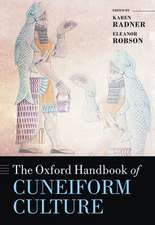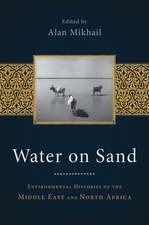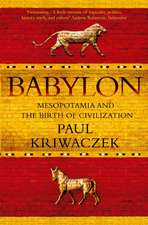Music in the Jewish Community of Palestine 1880-1948: A Social History
Jehoash Hirshbergen Limba Engleză Paperback – 17 oct 1996
Preț: 323.75 lei
Preț vechi: 395.60 lei
-18% Nou
Puncte Express: 486
Preț estimativ în valută:
61.95€ • 64.68$ • 51.27£
61.95€ • 64.68$ • 51.27£
Carte tipărită la comandă
Livrare economică 24-31 martie
Preluare comenzi: 021 569.72.76
Specificații
ISBN-13: 9780198166511
ISBN-10: 0198166516
Pagini: 310
Ilustrații: music examples, 1 map
Dimensiuni: 157 x 235 x 18 mm
Greutate: 0.45 kg
Ediția:Revised
Editura: Clarendon Press
Colecția Clarendon Press
Locul publicării:Oxford, United Kingdom
ISBN-10: 0198166516
Pagini: 310
Ilustrații: music examples, 1 map
Dimensiuni: 157 x 235 x 18 mm
Greutate: 0.45 kg
Ediția:Revised
Editura: Clarendon Press
Colecția Clarendon Press
Locul publicării:Oxford, United Kingdom
Recenzii
This is a fascinating account of the development of music, and, perhaps even more, of musical institutions, in the area that became the State of Israel in 1948 ... Altogether, this is a well-written, well-researched volume of interest not only to those working with Jewish and Middle Eastern music, but also to anyone concerned with how an emerging nation develops and establishes its identity, and how that identity is bound up with music at all levels.
...ground-breaking study...With clarity and erudition at every turn, Professor Hirshberg illuminates the factors behind such a rapid development of a national musical life and style. Extensive, readable footnotes add depth, and they are complemented by a very useful bibliography and telling music examples. An important contribution to the study of recent music history and national styles, this book will prove an invaluable resource for musicologists and historians until well into the future,and will provide a basis for the 'next chapter', a sequel treating the musical achievements of contemporary Israel.
this is a well-documented work...The author's survey of developments during the 1930s is crowded with interesting details...Hirshberg has assembled a helpful resource on musical developments in prestatehood Israel.
The study of musical life in the framework of social history is an enriching approach, adding an important component to the literature on social and cultural developments of the Yishuv in pre-state Palestine...it adds an important aspect to our understanding of social Jewish history and the history of music.
ground-breaking study of music in the formative period prior to the nascent State of Israel ... In his elegant weave of 'diachronic' histories, of institutions, individuals and movements into a richly laced broader 'synchronic' history, Professor Hirshberg discusses the complex synthesis of ideas, from East and West, that led to a distinctive Jewish musical nationalism. With its extensive, readable footnotes, full bibliography and telling musical illustrations, Professor Hirshberg's informative and stimulating book represents an important contribution to recent musicology, and to Middle Eastern studies. It is sure to prove an invaluable resource for musicologists and social historians well into the future.
...ground-breaking study...With clarity and erudition at every turn, Professor Hirshberg illuminates the factors behind such a rapid development of a national musical life and style. Extensive, readable footnotes add depth, and they are complemented by a very useful bibliography and telling music examples. An important contribution to the study of recent music history and national styles, this book will prove an invaluable resource for musicologists and historians until well into the future,and will provide a basis for the 'next chapter', a sequel treating the musical achievements of contemporary Israel.
this is a well-documented work...The author's survey of developments during the 1930s is crowded with interesting details...Hirshberg has assembled a helpful resource on musical developments in prestatehood Israel.
The study of musical life in the framework of social history is an enriching approach, adding an important component to the literature on social and cultural developments of the Yishuv in pre-state Palestine...it adds an important aspect to our understanding of social Jewish history and the history of music.
ground-breaking study of music in the formative period prior to the nascent State of Israel ... In his elegant weave of 'diachronic' histories, of institutions, individuals and movements into a richly laced broader 'synchronic' history, Professor Hirshberg discusses the complex synthesis of ideas, from East and West, that led to a distinctive Jewish musical nationalism. With its extensive, readable footnotes, full bibliography and telling musical illustrations, Professor Hirshberg's informative and stimulating book represents an important contribution to recent musicology, and to Middle Eastern studies. It is sure to prove an invaluable resource for musicologists and social historians well into the future.

















